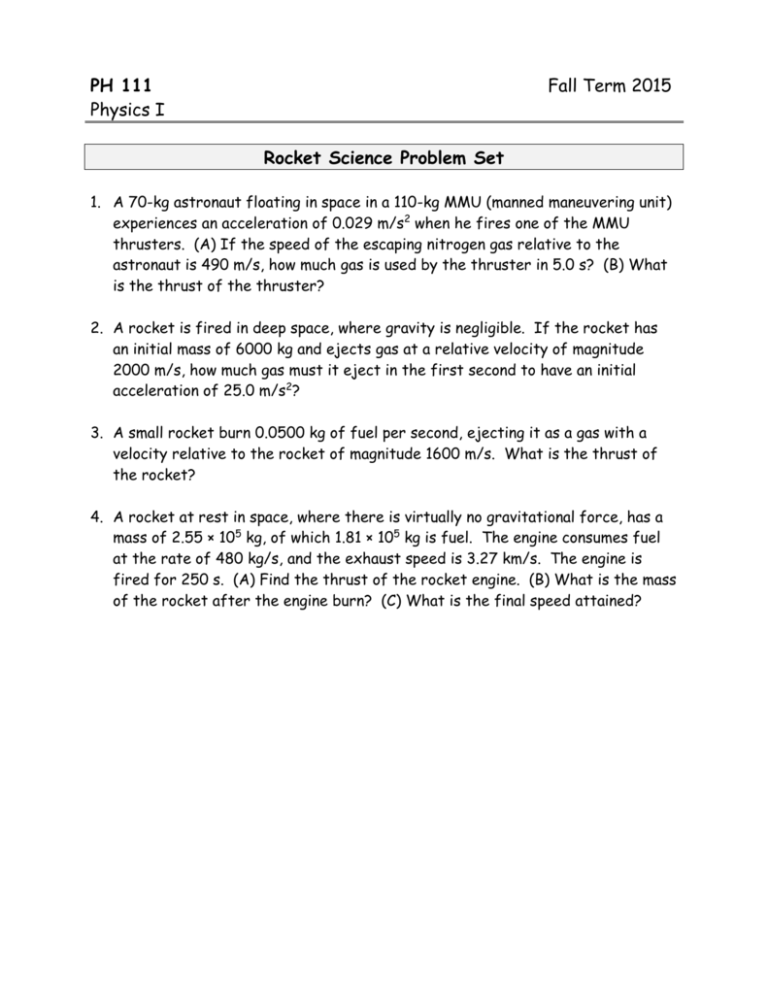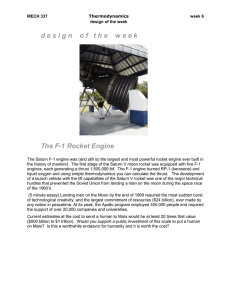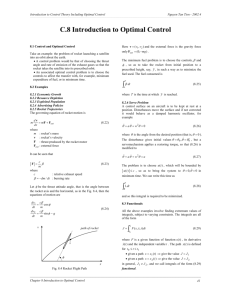Rocket Problems Worksheet - Rose
advertisement

PH 111 Physics I Fall Term 2015 Rocket Science Problem Set 1. A 70-kg astronaut floating in space in a 110-kg MMU (manned maneuvering unit) experiences an acceleration of 0.029 m/s2 when he fires one of the MMU thrusters. (A) If the speed of the escaping nitrogen gas relative to the astronaut is 490 m/s, how much gas is used by the thruster in 5.0 s? (B) What is the thrust of the thruster? 2. A rocket is fired in deep space, where gravity is negligible. If the rocket has an initial mass of 6000 kg and ejects gas at a relative velocity of magnitude 2000 m/s, how much gas must it eject in the first second to have an initial acceleration of 25.0 m/s2? 3. A small rocket burn 0.0500 kg of fuel per second, ejecting it as a gas with a velocity relative to the rocket of magnitude 1600 m/s. What is the thrust of the rocket? 4. A rocket at rest in space, where there is virtually no gravitational force, has a mass of 2.55 × 105 kg, of which 1.81 × 105 kg is fuel. The engine consumes fuel at the rate of 480 kg/s, and the exhaust speed is 3.27 km/s. The engine is fired for 250 s. (A) Find the thrust of the rocket engine. (B) What is the mass of the rocket after the engine burn? (C) What is the final speed attained?











